Hackney Union Children's Homes
Information on Hackney Union's workhouses is on a separate page.
Hackney Schools, Brentwood
In 1885, the Brentwood School District, of which Hackney was a member, was dissolved and Hackney took over its school at Brentwood as a Branch Institution. The site had originally been an industrial school set up by the Shoreditch Board of Guardians in 1854, and had been taken over by the Brentwood School District in 1877.
The school had a south-facing main building, three storeys high at the front, with dining-hall, kitchens and nurseries in a wing at the centre rear, and long, narrow wings to each side, one accommodating boys and the other girls. Utility blocks at the rear included a bakehouse, laundry and boiler house.
In 1879, three additional detached blocks were added at the south-east of the site, which by 1930 had become known as Edward Home, Alexandra Home, and Victoria Home. The two-storey Edward Home was nearest to the main building, the single-storey Alexandra was at its east, and two-storey Victoria lay to the south. Hackney made further enlargements at the north and west including a swimming pool in 1891, and workshops in 1898. The site location and layout in 1915 are shown below:
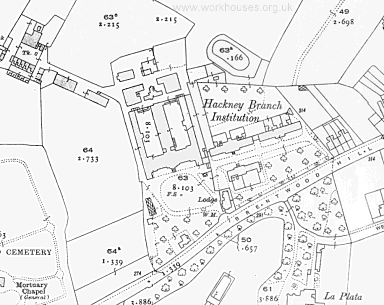
Hackney Brentwood School site, 1894.

Hackney Brentwood School from the south-east, 1905.
© Peter Higginbotham.
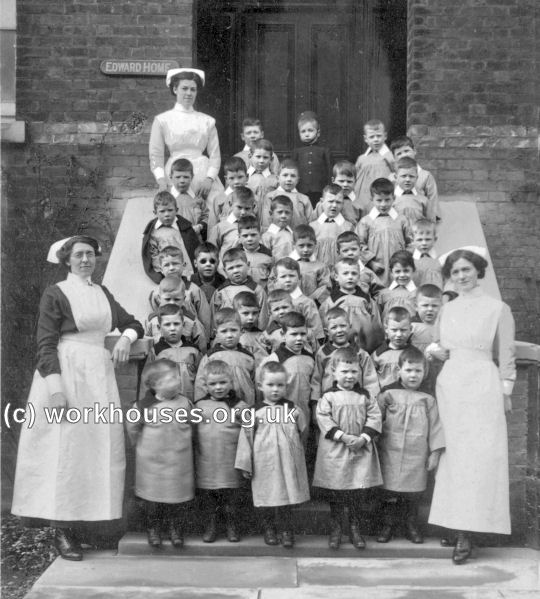
Hackney Brentwood - Edward House inmates, early 1900s.
© Peter Higginbotham.
The following description of the school dates from 1898.
Children from two to four years of age are located in the central wing, where one dormitory is provided for them with 22 beds, and also a large day nursery.
The washing and bathing arrangements are excellent in all respects, and include glazed earthenware spray baths and troughs on the jet system. Each child is provided with its own towel, brush and comb, and tooth-brush. All the children except remand boys, have two suits of clothes, not uniform, one for Sunday and one for every day wear, and that suitable lockers are set apart for the individual use of each child.
There are three recreation rooms on the ground floor of the main buildings, for boys, girls, and infants respectively, none of which, with the exception of the infants' room, are sufficiently large and cheerful. The three class-rows and three schoolrooms which are allotted to the boys, girls, and infants, are defective ill ventilation and lighting, and are also of insufficient size.
The general infirmary contains eight wards with an average of ten beds in each, and two recreation rooms. They are well arranged, well lighted, and well ventilated, and there are two playing yards for the boys and girls. At the present time, this building is used exclusively for ophthalmic cases. The Guardians have provided a detached house near the entrance gate for ophthalmic children who are well enough to receive instruction, the boys attending five afternoons, and the girls six mornings in the week for this purpose.
The contagious block is a one-storied, self-contained building, it has two wards with 18 beds in each, and two playrooms. All the arrangements are very good. With the exception of Hornchurch, there is more accommodation provided here for sick children than in any other Poor Law school. The chapel is capable of holding 400 children and lies in the direction of the band-room and gymnasium.
The laundry, situated at the rear of the main block, is not large enough, but is well arranged; the machinery is worked by steam, which is also used for cooking and general heating purposes.
A large swimming bath has been erected, and all boys and girls, passed by the medical officer, undergo a regular course of instruction in swimming. At the present time there are about 60 boys in the school who are able to swim. The girls receive instruction from a swimming mistress.
The gymnasium is a large, airy, corrugated iron detached building, furnished with all the necessary appliances. The boys and girls are drilled here under a competent drill master.
The shops are cramped in point of size and position, and are under one roof, but new workshops of adequate size and modern construction are now being erected.
In December 1897 there were about 60 half-timers. The boys are trained in carpentering, painting, tailoring, shoemaking, and baking, under efficient instructors, and the Guardians are also contemplating the employment of a skilled plumber to instruct the boys in this branch of useful industry. Arrangements have been made with the Working Boys Homes to place boys out, on leaving the school, in the trades to which they have been trained.
The farm provides a good opening, under a competent bailiff, for some of the duller boys, and the superintendent often receives applications for "good milkers," and is able to supply them. The farm buildings are both old and small, and could be advantageously rebuilt.
There is an excellent and well-taught band — 34 boys are in the 1st band, and 28 in the 2nd. During the year 1897, 16 outside engagements were successfully carried out by it. The practising band-room is of insufficient size, but the neighbouring gymnasium is, when available, used in its stead..
The Guardians have made arrangements for girls to pass in rotation through the several domestic departments of the school, in order that they may have an insight into all kinds of domestic work. There is a large demand for these girls as domestic servants. The last report of the M.A.B.Y.S. shows a distinct improvement in the fulfilment of their duties as servants.
There is a good library in each department, which is well maintained by regular grants ; there is also a regular supply of children's magazines and periodicals ; and, in the boys' school, a museum of various objects of interest. The sum of 20l. a year is expended by the Guardians in sending the eider children to visit museums, picture galleries, and other places of interest. These visits are conducted by the chaplain, and are much appreciated by the children.
Out-door games are encouraged ; there are cricket and football matches, and annual athletic sports, in which the whole school takes keen interest.
Children are allowed plenty of freedom. The boys take walks with attendants every Sunday morning, and about 30 of them go out on Saturday afternoons unattended; while the girls have similar advantages and privileges granted to them.
The staff in the boys' school consists of a head master and three assistant masters with good qualifications. The Inspector of Poor Law Schools reported on 4th November 1897, "The boys in the Sixth Standard are very weak in arithmetic, but otherwise throughout the school they have passed a very fair examination."
In the girls' school there is a head mistress with two assistant teachers. The Inspector reported in January 1897, "The girls are well taught, and have throughout passed a good examination."
The whole teaching staff has recently become non-resident, and supervision out of school is now entrusted to others.
A receiving school in the form of cottage homes, on somewhat similar lines to those of the Branch School of the Kensington and Chelsea managers at Hammersmith, is now being established. Several cottages have already been purchased in the Sidney Road near the workhouse and Homerton Station, and it is proposed that all the remaining cottages in this road, should be bought up for this purpose. Children are to be received direct from their own homes, without any stay in the workhouse. Each child will remain in these cottage homes until it has been decided by the Guardians how it can best be dealt with, that is to say, by being boarded-out or transferred to school at Brentwood or elsewhere. While living in the homes, the children are to be educated in the local public elementary schools, and the elder ones will attend the technical education classes provided by the London School Board. It is proposed that each cottage should contain about 10 children, whose clothing should be similar to that worn by the artisan classes, and who should take their recreation in the playgrounds of the Board Schools, or in Victoria Park, and should be sent to churches, chapels, and Sunday schools of their own religious denominations, in the neighbourhood. A Children's Committee, together with the Superintendent and his wife, are to have the supervision and management of this department.
To make no mention of the scandal attaching to the cruelties practised by nurse Gillespie might be open to misconstruction. The Guardians had no reason to suspect that any one of their officers was capable of treating infant children so inhumanely. A surprise visit by two Guardians is now made once in every fortnight, and it is to be hoped there will never be, either here or elsewhere, a repetition of such monstrous misconduct.
In conclusion it may be fairly stated that the present Guardians appear to be devoting themselves zealously, in many directions, to the advancement of the happiness and well-being of the children committed to their care. The superintendent and matron are Mr. and Mrs. Young; the chaplain, Rev. C. Thomas ; and the medical officer, Mr. A. W. Wallis.
The scandal referred to in the above described took place in 1893. One of the school's nurses, Ella Gillespie, was accused of "systematic cruelty" to the children in her charge including beating them with stinging nettles and forcing them to kneel on wire netting that covered the hot water pipes. Children were also deprived of water and resorted to drinking from the toilet bowls. Her most notorious practice was night-time "basket drill" where children were woken from their sleep and made to walk around the dormitory for an hour with a basket on their heads containing their day clothes, and receiving a beating if they dropped anything. The case came to court at the end of May, 1894 and received wide press coverage.
At a special sitting of the magistrates at the Brentwood Police-court, Ella Gillespie, aged 54, formerly nurse at the Hackney Training Schools, Brentwood, was charged with having on various dates between the months of April and October, 1893, wilfully ill-treated and exposed several children as to cause them unnecessary pain and suffering.
Clara Good, aged 13, deposed that in August last the prisoner knocked her head against the wall because she had been talking to another girl. Two days later witness had to go to the infirmary on account of her head. The prisoner had knocked witness's head against the wall six or seven times prior to August last. In the spring of 1892, whilst witness and two other girls were scrubbing the nursery floor, the prisoner entered and knocked over two scuttles of coal. Then she turned over four pails of water, and rubbed witness's head into the wet coal on the floor. This was because witness had helped another girl to scrub the corridor, the girl hawing been set to do the work as punishment. Witness saw the prisoner on one occasion strike a girl named Newman with a bunch of keys, cutting her head and making blood Bow. Last July witness saw the prisoner knock down Eliza Clarke (now dead) and her head against the bedstead. This was done because Clarke had been speaking to another girl. Witness also saw the prisoner dip a boy's bead in a bucket of water on more than one occasion. During the winter prisoner gave the children "basket drill." They were compelled to walk round the dormitory in their night-clothes, in their bare feet, and with a basket on their heads containing their day clothes. The children were kept at basket drill for an hour after being dragged out of bed.
Walter Gibbons, aged seven, stated that the prisoner, had knocked his head against a wall, and "ducked" his head in a fire bucket. She had also hit him with a cane. He had done "basket drill" with only his shirt on, and had been caned if he dropped anything.
Elizabeth Chillingworth stated that prisoner had knocked her bead against the wall in 1891. Witness never complained to any one, as she had heard the prisoner threaten to punish the children more if they complained. Witness had seen the children have basket drill from a quarter to 7 till 9 o'clock. Witness once saw the matron enter the ward with a lady and a little boy while the basket drill was going on.
Elizabeth Fawcett, aged 13 years, stated that the prisoner had slapped her face, pulled her hair, and struck her with a frying pan. The prisoner used to send Alice Payne out for stinging-nettles. She used then to lay the children on the bed and thrash them with the stinging-nettles on their bare backs. Witness had seen the children compelled to kneel on the wire netting that covered the hot-water pipes. Witness saw the prisoner throw a boy named Charles Williams out of bed. The boy's eye was cut against the bedstead, and the prisoner, then sent him to the infirmary to have it strapped up. Witness had had 12 strokes on each hand with the cane when she was an infant, and all the punishment was inflicted at one time.
After other evidence of a similar nature, Sophie Crannis, infant nurse at the schools, and Emily Mason, nursery help, both stated that they had seen the basket drill going on. Neither had made any complaint about it, but the former had threatened to do so if it was repeated, and the latter came to the conclusion that the authorities must know what was going on, as she was informed by some of the elder girls that it had taken place for years.
Other witnesses reported that Gillespie was regularly drunk and that during 1893, a local brewery had supplied her with 19 four-and-a-half gallon casks of beer. Other staff such as the drillmaster Charles Archer had made excessive use of the cane, both in the number of strokes given, and in not waiting the requisite time after a misdemeanour before its use. It was also revealed that supposedly "surprise" inspection visits by members of the Board of Guardians were invariably preceded by requests from them to be met by a carriage at the local station and to have a good lunch laid on at the school. I was also noted that in the two years prior to 1891, children at the school had never gone outside its walls for recreation. Following the trial, Gillespie was sentenced to five years penal servitude. The Superintendent and Matron were suspended and several other staff resigned. Despite her sentence, the 1901 census finds Gillespie employed as a matron at the St Thomas Industrial Training Home in Oxford.
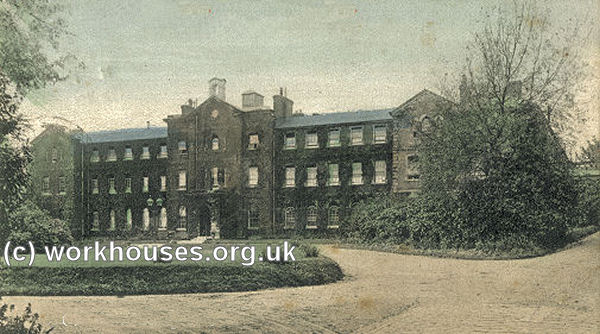
Hackney Brentwood School from the south-east, 1908.
© Peter Higginbotham.
From around 1908, after the opening of the union's cottage homes at Chipping Ongar, the Brentwood Schools were converted for use as a branch workhouse but still retained a separate infants' school.
From around 1917, the site was taken over by the Metropolitan Asylums Board for the accommodation of around 300 "sane epileptics".
After 1930, the site was taken over by the London County Council and became St Faith's Hospital. The school buildings no longer exist and the site has now been completely redeveloped as office accommodation.
Sidney Road Children's Cottage Homes / Receiving Home
In around 1898, the Hackney Board of Guardians began to acquire a number of houses on Sidney Road (now Kenworthy Road) at the east of the workhouse for use as children's cottage homes. With the opening of the Chipping Ongar cottage homes in 1905, a property on Sidney Road (opposite Kemeys Road) took on the role of a receiving home for the cottage homes and to provide short-term accommodation for 'ins-and-outs'. The building no longer exists.
Harvey Ormerod, a child at the home in the 1920s, recalls:
The second incident which has remained in my memory was the early morning toothbrush drill where we were seated on benches round a huge scrubbed deal table and were given an enamel mug containing some water. Each mug had a toothbrush chained to it and we had to scrub our teeth for ten minutes.
I also remember my brother screaming with fear while they tried to force him into a bath and I stood in the door wishing I was big enough to attack the horrible woman who was pounding him.
The other incident that still sticks in my craw was when I was constipated (I suppose) and was given a spoonful of castor oil. I immediately vomited and was smacked all round the room for having made a mess.
The whole place was very dark, cold and frightening. The staff were all cruel to us small children. I was five at the time. My brother, who was mentally deficient, eventually ended up in Darenth Park Training something or other near Dartford. He was assaulted by a sadistic male nurse there. After a struggle which involved my mother chaining herself to the railings of County Hall in protest, she eventually obtained his release from Darenth and he ended his adult days with my wife and family, dying aged 64.
Hackney Cottage Homes, Chipping Ongar
In 1901, the Hackney Board of Guardians had 826 children in its care. It attempted to place as many as possible with foster parents but not enough could be found and it resorted to the building of a new cottage homes site which would accommodate up to 300 children. The location it chose was Chipping Ongar where a number of its foster homes were already situated. A twenty-acre site was purchased for the sum of £7,500 at the north of the railway in Chipping Ongar, at the junction of London Road and Chelmsford Road. The buildings were designed by William A Finch and the official foundation stone was laid in October 1903 by Chairman of the Guardians John Fenton-Jones. The homes received their first children in 1905.

Hackney cottage homes foundation stone, 2004.
© Peter Higginbotham.
The site location and layout is shown on the 1920 map below.

Hackney cottage homes site, 1920.
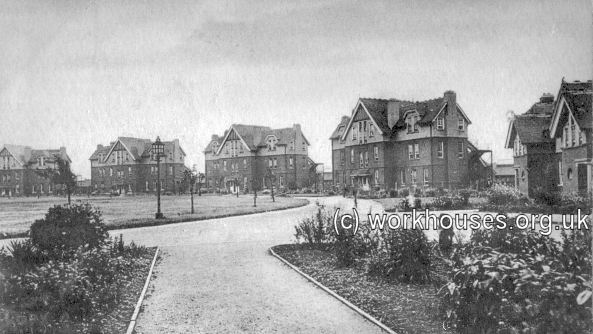
Hackney cottage homes from the west, c.1905.
© Peter Higginbotham.
A porter's lodge stood at the entrance from London Road at the west of the site.
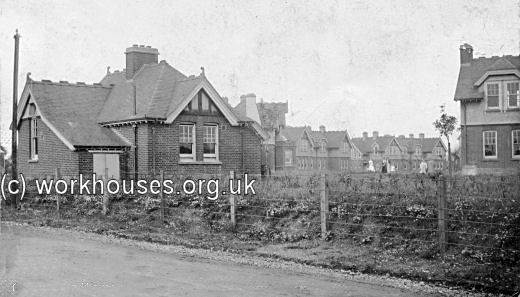
Hackney cottage homes porter's lodge from the south-west, c.1910.
© Peter Higginbotham.
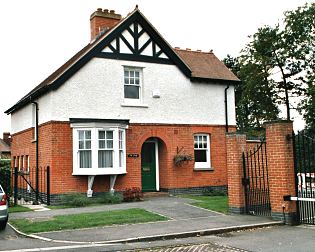
Former Hackney cottage homes porter's lodge from the north-east, 2004.
© Peter Higginbotham.
Nearby, a receiving house contained 27 beds for new arrivals at the homes who were kept there for two weeks in case they were carrying any infectious diseases.
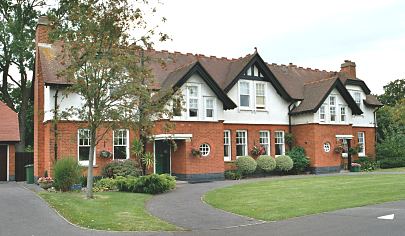
Former Hackney cottage homes receiving house from the east, 2004.
© Peter Higginbotham.
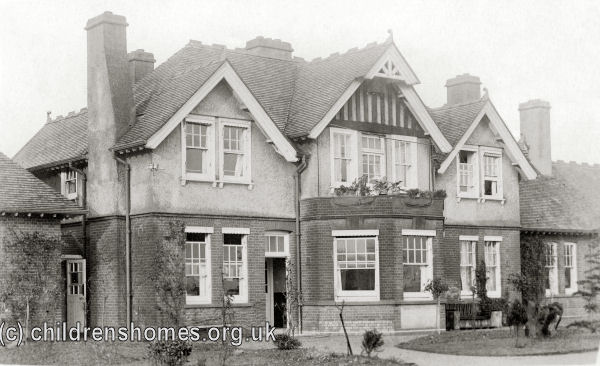
Hackney cottage homes superintendent's house, c.1910.
© Peter Higginbotham.

Former Hackney cottage homes superintendent's house, 2004.
© Peter Higginbotham.
Six children's cottages surrounded a central green. Four at the south of the green housed boys and two at the north-east housed girls. Each cottage was three storeys high and could accommodate 52 children. The ground floor contained a day room and reading room, with a dining room and kitchen in a single-storey block to the rear. Dormitories occupied the upper floors. The central portion of each house contained staff quarters. Dormitories occupied the upper floors.

Former Hackney cottage homes boys' house from the north, 2004.
© Peter Higginbotham.
At the north of the green were two pairs of two-storey semi-detached cottages. The eastern pair each accommodated 17 infants aged three to five. The western pair each accommodated 18 senior and small girls.
A 24-bed infirmary stood at the far south-east of the site. The central portion contained the kitchen, dispensary and staff quarters. Separate boys' and girls' wards were placed at each side, connected by narrow corridors. Ventilators above the bay windows at the end of each block aired the wards.
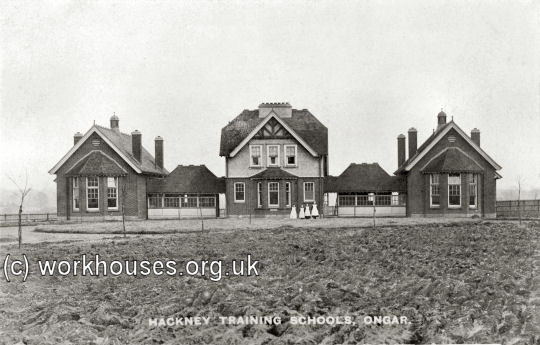
Hackney cottage homes infirmary from the north-west, c.1905.
© Peter Higginbotham.

Former Hackney cottage homes infirmary from the north-west, 2004.
© Peter Higginbotham.
The administration building stood at the north-west of the site. The superintendent's quarters were at the centre and included an office, sitting-room and dining-rooms, with bedrooms on the first floor. Small bedrooms were also provided for older girls who acted as servants in the house, and received "finishing touches" before passing on from the homes into domestic service. The west wing of the building housed offices and stores. The east wing contained the matron's office and needle room.

Former Hackney cottage homes administration building from the east, 2004.
© Peter Higginbotham.
The school, which was not erected until 1907, lay at the south-west of the site. It had desk-space for 300 children, including one infants and five mixed classrooms which were entered from a central hall.

Former Hackney cottage homes school from the north, 2004.
© Peter Higginbotham.
A block at the rear of the school contained a coal-store at the centre, toilets to each side, and open playsheds at each end.
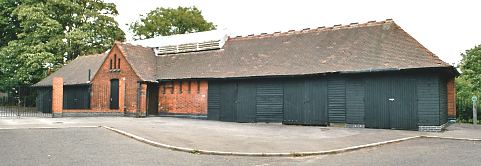
Former Hackney cottage homes school outside block from the south-west, 2004.
© Peter Higginbotham.
Under-fives were given instruction by attendants in their cottages. After the age of fourteen, the boys were given vocational training and some of the girls midwifery training.
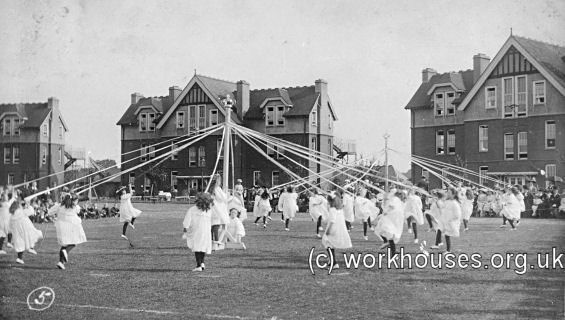
Hackney cottage homes sports and inspection day, 1913.
© Peter Higginbotham.

Hackney cottage homes picnic, date unknown.
© Peter Higginbotham.
The cottage homes site was largely self-sufficient with ample storage facilities, its own electric plant worked by gas engines, and pumping equipment to supply water.
The number of children housed at the school peaked at 369 in 1920 and had fallen to 206 by 1925. After 1930, the site was taken over by the local public assistance committee and became Ongar Public Assistance School until its closure in March 1939. It was then re-opened as a school for 'educationally subnormal' boys under the name Ongar Residential School. After the Second World War, the site was renamed Great Stony School and housed children with learning difficulties. The school closed in 1994 and the buildings have now been converted to residential use.
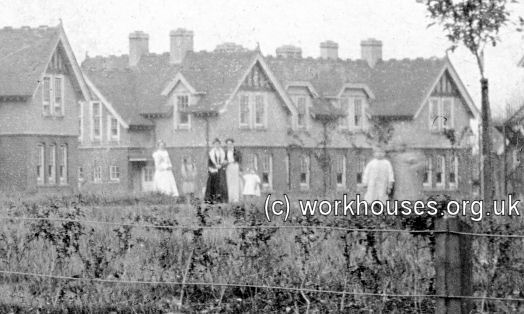
Hackney cottage homes from the south-west, c.1910.
© Peter Higginbotham.
Staff
Inmates
Records
Note: many repositories impose a closure period of up to 100 years for records identifying individuals. Before travelling a long distance, always check that the records you want to consult will be available.
-
The
Ancestry UK
website has two collections of London workhouse records (both name searchable):
- Westminster workhouse records are available on FindMyPast, .
-
The London Archives, 40 Northampton Road, London EC1R OHB.
- Sidney Road receiving Home — holdings include: Creed registers (1900-31); Punishment book (1899-1930).
- Brentwood School — holdings include: Creed registers (1877-1931); Vaccinations (1881-1906).
- Brentwood Branch Workhouse — holdings include: Registers of inmates (1908-31); Creed registers (1908-26).
- Chipping Ongar Cottage Homes — holdings include: Admissions and discharges (1908-1939); Creed registers (1908-39); Baptisms (1929-32); Deaths (1910-12); Punishment book (1908-31); Apprenticeship register (1909-33).
- Other holdings include: Guardians' minute books (1837-1930); Staff records (1859-1939); etc.
Bibliography
- Monnington, W. and Lampard, F.J. (1898) Our London Poor Law Schools
- Montair, Paul (1995) Swelling Grounds
Links
- Hackney Archives, 2nd floor, Dalston CLR James Library and Hackney Archives, Dalston Square, London E8 3BQ.
Unless otherwise indicated, this page () is copyright Peter Higginbotham. Contents may not be reproduced without permission.



